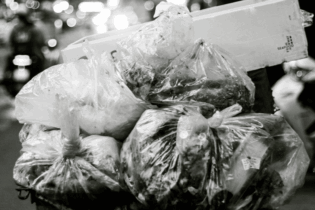Technology examples
In America, a Redmond, Washington based firm has created a new technology that liquefies food scraps and turns them into fertilizer. Closer to home, several organisations have set up ‘worm wine’ farms, where food scraps are diverted from landfill, composted by earthworms and then the worms’ waste products are harvested to beneficiate compost. This creates a more high-value product, which in turn results in better crops. Supermarkets can engage in this type of project with their food waste, partnering with municipalities to simplify municipal solid-waste management processes, while creating community jobs (and good PR!) A number of different waste-to-energy facilities have also been set up in South Africa and abroad for harvesting biogas which can be flared to create a safer landfill, or harvested to use as fuel. When private companies are involved, they may engage in off take agreements with landfills so that they can use this clean energy, resulting in a lower electrical bill.
Food waste is one of the biggest contributors to landfills. South Africa is running out of usable landfill airspace, and the space itself comes at a premium.
By diverting food waste from landfills using onsite technologies, such as digesters, waste-to-energy solutions and data-driven approaches, landfills become more stable, far less space is used and landfill managers are able to recover a valuable resource for energy and food production.
Logistical challenges
Of course, it’s far better to divert food waste before it arrives at the landfill, ideally by donating leftover food that’s still good to food banks or through tighter supply chain management. Such approaches relieve municipal waste managers and haulers, in terms of the complex logistical processes of collecting food for composting or creating energy.
Stan Jewaskiewitz, Founder of Envitech Solutions, notes that by diverting food waste, landfill managers prolong the life of landfills. “Two of the biggest waste fractions in landfills are made up of food waste and building and construction rubble. By having a composting facility for the former and a crusher on site for the latter, daily tonnages can be considerably reduced. And the landfill will be more stable and easier to manage over the site’s entire lifecycle,” he says.








